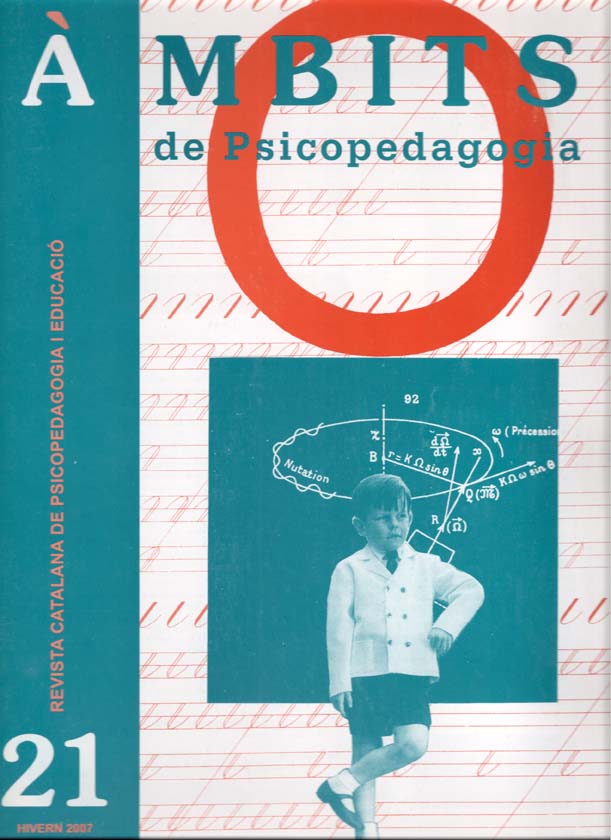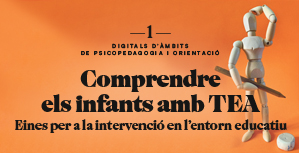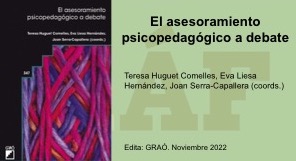Transformation of a special education center into a resource center for the educational inclusion of students with serious barriers to learning and participation.
CEE ASPASIM - 20 years of a process
Abstract
Its an evidence that approaches to the inclusive school are reinforced; holding that students with disabilities have to learn and participate in normal classes with suitable supports, adaptations and complementary services ; even those who presents extensive and pervasive support needs. A narrow collaboration and knowledge and experiences exchanges between special and mainstream schools are needed.
The special school “Aspasim” initiative is in line with this way – process from the shared integration to a full inclusion into the class of students with significant and severe barriers to learning and participation. Finally, functions, proposals, concerns and personal experiences from different involved professionals are exemplified: Class teachers, support teachers, speech therapist and physiotherapist.
References
CARBONELL. E, BUSQUE. M, DIEZ. E, ESTELLA. J, FABREGAS. T, FONTANET. R, GARCIA. A, GUTIERREZ. M, HERNANDEZ. LL, ORGUE. A, OLLER. LL, PLANA. S, RUF. J, TRIADO. E. (1999). El Constructe de Qualitat de Vida. Barcelona. Coordinadora de Tallers per a Minusvàlids Psíquics de Catalunya.
CARBONELL, E ; BATLLORI, C; MUÑOZ, J ; SALTOR, A ( 2004) “Inclusió Educativa d’alumnat amb greus barreres per a l’aprenentatge i la participació, també en l’ensenyament secundari” . Suports vol.8 núm. 2 , p. 132-147.
CARBONELL, E (2006) . “ASPASIM- Un modelo de atención comunitaria a personas con graves discapacidades psíquicas” . Revista de Educacion social vol. 5
CARBONELL, E (2006) . “ Planificación Centrada en la Persona y Discapacidad: Barreras y oportunidades de mejora en Catalunya” . Revista médica internacional sobre el Sindrome de Down vol. 10 núm 1 p.13-16.
CASSANDRA .MC, WALDROM. N, MASSOUMEH.M. (2004) “Academic Progress Across inclusive and traditional Settings” Mental Retardation. Vol. 42, num.2 pp: 136-144, abril 2004.
MILIAN, M ; RUF, J. ( 1994) “El context com a factor determinant per a una atenció integral”. dins de Segones Jornades catalanes d’atenció a D.P. Profunds. CCCP. Igualada.
PEETSMA, T .(2002) “Inclusión en educación: una comparación del desarrollo de los alumnos de educación especial y ordinaria”.Siglo Cero.Vol. 33 nº 203, pp:23-30.
PELTIER,C.(1997) . “The effect of inclusion on nondisabled children: A review of the research”. Contemporany Education, núm 68 (4), pp: 234-238
SEBASTIAN, C; TORRES, D. (1993) . “El paper de les situacions d’intercanvi en el desenvolupament de la Capacitat Comunicativa” dins 2es. Jornades tècniques d’educació especial. APPS. Barcelona.
DECRET 299/1997 , de 25 de novembre.
DEPARTAMENT D’ENSENYAMENT. (2003). Pla director de l’educació especial de Catalunya. Generalitat de Catalunya.
LEY ORGANICA 2/2006, de 3 de mayo, de Educación.
Downloads
Published
Issue
Section
License
The authors maintain their copyright and give the right to the first publication of the work to the journal, registered under a Creative Commons Attribution-Non Commercial-NoDerivs license. This license allows others to download the works and to share them with others as long as they credit the author, but it does not allow for any kind of modification or commercial use.















